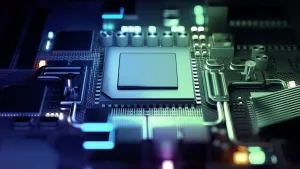
The trading industry is a fast-paced, dynamic, and highly competitive environment where every nanosecond can count. Data transfer and computer processing speed can make the difference between a profitable trade and a loss in today’s market. That’s why many trading firms understand the impact of ultra-low latency trading systems that leverage FPGA technology.
This article explores what ultra-low latency trading systems are and how they’re enabled by FPGA and SmartNIC technologies, the importance of using a sufficiently complex (“smart”) trading algorithm, and how trading firms that have adopted these technologies are using them to gain an edge in the market.
Topic covered:
· What’s Ultra-low Latency?
· What’s FPGA Technology?
· What’s a SmartNIC?
· Make Your Trading Algorithm Smarter
· A Proven Solution for Market Success
In the trading industry, ultra-low latency describes a system optimized to process and execute trades at breakneck speeds (nanoseconds). This optimization involves minimizing the time it takes for a trading system to receive, process, and act on market data. The system must process a high volume of data with as little delay as possible. Delay (latency) has two sources that must be minimized: time to process the algorithms that optimize trades and communicate over the network between the trading system and the exchange.
An ultra-low latency trading system can significantly advantage traders in this highly competitive market. Responding to the market in real time is crucial when pursuing a latency-sensitive or latency-dependent trading strategy. A delay of nanoseconds can affect the profitability of a trade or whether it’s viable.
Field-Programmable Gate Arrays (FPGAs) are highly specialized semiconductors that can be programmed and reprogrammed to perform specific tasks. Their flexibility and computation speed make them ideal for applications requiring fast and efficient processing of large amounts of data, such as high-frequency trading.
Since they operate at a hardware level, FPGAs can process market data and perform complex mathematical calculations, such as statistical arbitrage and risk management, much faster than traditional software-based approaches. Additionally, FPGAs can be programmed to interface directly with other hardware components, such as network interface cards (NICs), further increasing speed. These capabilities allow traders to execute trades much faster than their competitors.
The flexibility of FPGAs also means that they can be easily reprogrammed to adapt to evolving trading strategies. This capability means that FPGAs can increase speed without giving up the flexibility offered by a software-based approach.
A Smart Network Interface Card, or SmartNIC, is a specialized network interface card that contains a programmable FPGA.
SmartNICs provide hardware acceleration for network interface processing, and by leveraging their programmability, SmartNICs can offload an expanding array of tasks from a server’s CPU. This reduces the burden on the server’s CPU, freeing it up to concentrate on other tasks and improving the overall performance of the trading system.
SmartNICs can also replace the regular NIC in the server platform, allowing greater flexibility to change data processing protocols as needs evolve.
The increased performance and flexibility that SmartNICs offer—especially their ability to provide hardware acceleration for networking tasks and enable the creation of custom computing solutions—is critical for high-frequency trading applications.”
As trading firms continue to seek faster and more efficient ways of processing market data, SmartNICs will likely become an essential component of their trading infrastructure.
Trading firms must balance the speed and complexity of their trading algorithms. More complex algorithms make better trading decisions but take longer to process—potentially leading to missed opportunities.
FPGAs and SmartNICs can help mitigate these challenges by increasing network and processing performance through hardware acceleration. A SmartNIC-equipped trading system can execute more complex algorithms or the same algorithms faster, potentially improving the quality and quantity of trades and increasing competitiveness for latency-sensitive strategies.
However, implementing an ultra-low latency solution comes with its own set of challenges. It requires high technical expertise and a significant investment in hardware and software. Therefore, firms need to carefully consider their specific requirements and weigh the benefits against the costs and complexity of implementation. With careful planning and implementation, traders can gain a competitive edge in the market by leveraging FPGAs and SmartNICs to make their trading algorithms smarter and faster.
The Orthogone Ultra-Low Latency FPGA Framework is a hybrid solution designed to help businesses overcome the challenges of implementing an ultra-low latency trading system. The framework leverages the power of FPGAs to achieve ultra-low latency networking functions, providing trading firms with a competitive edge. Specialized IP cores are included and ready for use, supporting a range of trading use cases such as tick-to-trade, order routing, risk checks, and exchange interconnects.
These features, combined with Orthogone’s deep experience in FPGA development specifically tailored to the needs of the financial services sector, make Orthogone’s Ultra-Low Latency FPGA Framework an obvious choice when selecting core components for electronic trading systems or other high-performance computing applications.
Contact us today to learn more about Orthogone’s products and services.

Quickly develop the ultimate portfolio of flexible FPGA and software applications


